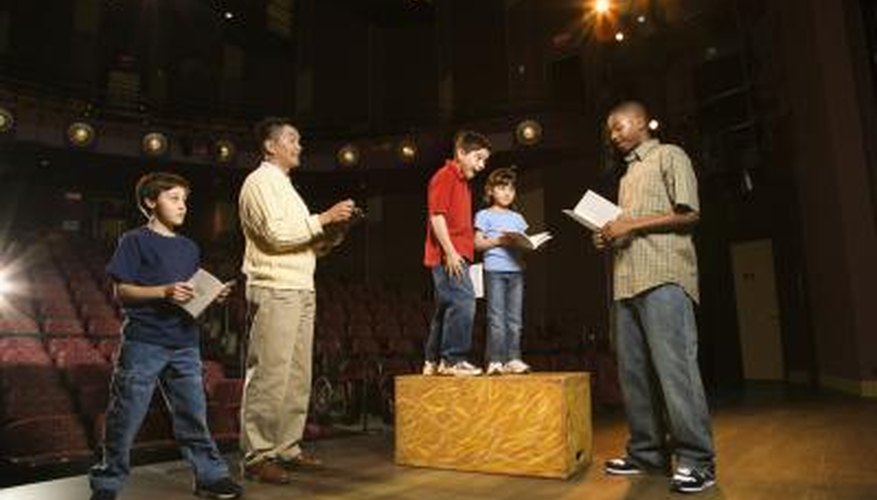In theatre, there are many stage production techniques that help progress the story for the audience. One of those techniques is known as a split scene. Split scenes are an effective way to carry the story by portraying simultaneous thoughts and events by characters across different settings.
Description
In its most essential form, split scenes occur when two different scenes are coinciding side by side on stage. Split scenes help coordinate the narrative of the drama by showing two overlapping experiences by actors.
How it Occurs
The stage must be set up so two different settings can be seen. One example is to have one half of the stage be the scene for a house setting, while the other half of the stage is a public space, like the downtown of a city. For most of the play, the drama is performed in one part of the stage, such as the house or the city, but the split scene incorporates all parts of the stage.
What Happens
Two scenes simultaneously occur on the stage, with actors on each part of the stage itself. The actors speak their dialogue before and after each other. For example, the house scene actor may state a full sentence, then the city scene actor says his line once the other actor is done. This keeps the dialogues from overlapping each other.
- Two scenes simultaneously occur on the stage, with actors on each part of the stage itself.
Technical Purpose
To speed up a play, the split scene allows two settings at once to occur. So, for the example, a drama scene in a house can concurrently be performed as a drama scene in the city streets is performed. Usually, this is done to overlap a theme. The house scene and the city scene may both involve a dramatic theme of family issues. Hence, the audience sees a juxtaposition through the parallel settings and actor dialogue, so the audience may become more informed about the plot, character development and dramatic themes.
- To speed up a play, the split scene allows two settings at once to occur.
- Hence, the audience sees a juxtaposition through the parallel settings and actor dialogue, so the audience may become more informed about the plot, character development and dramatic themes.
Use in Television and Film
Television and film take cues from theatre productions, except modern technology helps editors create a motion picture instead of a live theatre production. Split screens are common in motion picture programs, however, through careful editing. A television or movie drama may cut between scenes to see how two or more actors are experiencing an event in their unique ways. This motion picture technique evolved from the use of split scenes.
- Television and film take cues from theatre productions, except modern technology helps editors create a motion picture instead of a live theatre production.
- Split screens are common in motion picture programs, however, through careful editing.
